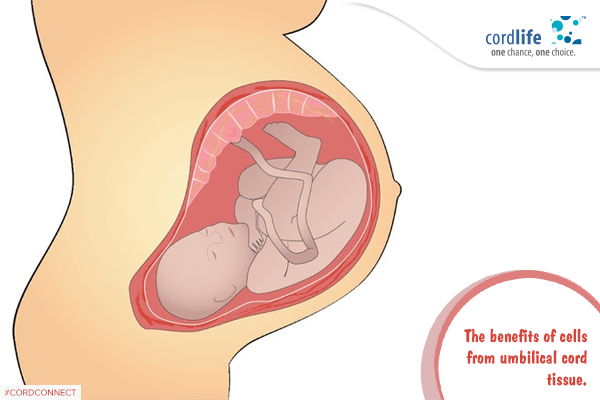Table of Contents
Over the years scientific development in neonatal medical care has been revolutionary. One of the best advances in this domain has been in the form of cord blood and umbilical cord tissue banking. Between the baby and the mother, the umbilical cord acts as the lifeline as it comprises of many blood vessels, through which the umbilical cord blood pulses. The umbilical cord tissue, on the other hand, enables the blood vessels to weather the stress and the presence of the cord protects and supports them from bending.
The umbilical cord tissue comes with a high concentration of mesenchymal stem cells or MSCs. A research article states that “MSCs derived from the umbilical cord tissue, termed UCX, were investigated for their immunomodulatory properties and compared to bone marrow-derived MSCs (BM-MSCs), the gold-standard in immunotherapy.”[1]
According to available proprietary technology, UCX is being sequestered from the umbilical cord tissue; the methodology has proven to be quite strong, reproducible and will work adequately for stem cell banking. [2] It has been seen to produce a greater number of cells along with approximately 100% success rate with limited bacterial impurities.
In the present scenario, stem cells found in the cord blood are being used in the treatment of a number of blood-related diseases. However, there is a major hindrance as the volume of blood collected from the umbilical cord is low and can pose a drawback in terms of transplants. Studies and researches are currently underway to understand possible methods to increase the efficiency of cord blood transplants. Some investigations have delved into “ex vivo expansion of the hematopoietic stem cells before transplant, intensifying the homing of hematopoietic stem cells to the patient’s bone marrow, direct injections into the patient’s femoral bone, and transplants with multiple cord blood units” as stated in Banking Stem Cells From Umbilical Cord Tissue For Future Regenerative Medicine Applications. [3] A more direct technique is to make use of another stem cell population – MSCs found in the umbilical cord tissue – for co-transplantation with a cord blood unit, could well be the solution.
With technology to extract MSCs from cord tissue, the first step is to mince the tissue. This is further supported by an enzymatic breakdown process to “melt” away the cord tissue that in turn releases the native MSCs. An alternative way to preserve MSCs is to process the tissue and extract the cells thus securing them in a “treatment ready” form.
The clinical tests conducted on these cells have revealed affinity towards treating auto-immune diseases (diabetes, Crohn’s disease, graft-vs-host-disease), neurodegenerative disorders (Parkinson’s disease, Alzheimer’s) and cardiovascular diseases (acute myocardial infractions, ischemia).[4]
Deciding to store the umbilical cord tissue will give you the opportunity to take advantage of the therapeutic potential of stem cells in regenerative medicine. Umbilical cord tissue stored in cord blood banks represents an additional source of stem cells that may have both immediate and future applications. However, the choice to store your child’s umbilical cord tissue is only available to you once, therefore, think carefully while making your decision.
Sources used:
- http://www.bloodjournal.org/content/111/1/430.short?sso-checked=true
- http://www.ncbi.nlm.nih.gov/pubmed/23755729
- http://www.ncbi.nlm.nih.gov/pubmed/23998751
- https://stemcellres.biomedcentral.com/articles/10.1186/scrt394
- http://parentsguidecordblood.org/en/news/banking-stem-cells-umbilical-cord-tissue-future-regenerative-medicine-applications
- http://www.assembly.wales/NAfW%20Documents/hhs74_-_anthony_nolan.pdf%20-%2024012011/hhs74_-_anthony_nolan-English.pdf
- http://www.hindawi.com/journals/sci/2015/583984/#B30
- http://www.ncbi.nlm.nih.gov/pubmed/23895058
[1] What Makes Umbilical Cord Tissue-Derived Mesenchymal Stromal Cells Superior Immunomodulators When Compared to Bone Marrow Derived Mesenchymal Stromal Cells? – R. N. Bárcia,1 J. M. Santos,1 M. Filipe,1 M. Teixeira,1 J. P. Martins,1 J. Almeida,1 A. Água-Doce,2 S. C. P. Almeida,2 A. Varela,2 S. Pohl,3 K. E. J. Dittmar,3 S. Calado,4 S. I. Simões,4 M. M. Gaspar,4 M. E. M. Cruz,4 W. Lindenmaier,3 L. Graça,2 H. Cruz,1 and P. E. Cruz1
[2] R. I. Ganchas Soares, M. C. Baptista Coelho, J. M. Silva Santos, et al., Isolation Method of Precursor Cells from Human Umbilical Cord, edited by INPI, Medinfar, ECBio, Lisbon, Portugal, 2008.
[3] Banking Stem Cells From Umbilical Cord Tissue For Future Regenerative Medicine Applications – Rouzbeh R. Taghizadeh, PhD, & Kyle J. Cetrulo
[4] Taghizadeh RR, Cetrulo KJ, Cetrulo CL. Wharton’s Jelly stem cells: future clinical applications. Placenta. 2011 Oct;32 Suppl 4:S311-5. Epub 2011 Jul 6. Review. PubMed PMID:21733573. Abstract
